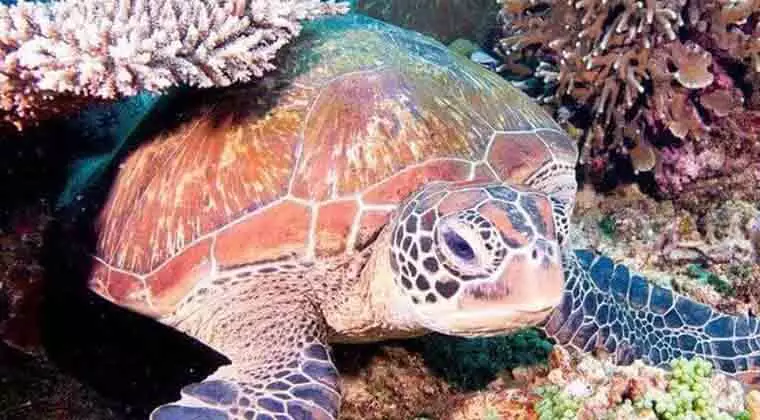Sea turtles do not breathe out of their butt. They have lungs, just like humans and other land animals, which are used to take in oxygen from the air. The breathing process begins when sea turtles surface at the water’s surface and inhale through their nostrils.
This oxygen is then carried by blood vessels to their lungs where it is absorbed into the bloodstream and circulated around the body. Sea turtles are able to hold a single breath for several minutes while they dive underwater but must return periodically to get more oxygen from the air.
How Often Do Sea Turtles Need to Come Up for Air?
Sea turtles are unique animals that spend most of their lives underwater. They have adapted to live in the ocean and as such, must come up for air at regular intervals. Generally speaking, sea turtles need to come up for air every few minutes when they are active and will remain submerged for much longer periods when resting or sleeping.
Depending on the species, a sea turtle can hold its breath anywhere from 30 minutes to several hours while resting or sleeping. In addition, some species of sea turtles may be able to stay submerged even longer by taking oxygen directly through their skin! The amount of time a sea turtle is able to stay underwater varies greatly depending on its size and activity level; larger individuals may be able to last longer than smaller ones.
Ultimately though, all sea turtles need access to fresh air in order for them to survive so it’s important that we take steps towards protecting these vital creatures from any harm caused by human activities such as pollution or over-fishing that could potentially disrupt their natural habitats and limit their ability breathe freely beneath the waves.
Sea Turtles Typically Surface Every Few Minutes When They are Actively Swimming
Sea turtles are some of the most fascinating creatures on earth, and their ability to stay underwater for hours is one of their defining characteristics. These majestic animals typically surface every few minutes when they are actively swimming, however, they can remain underwater for extended periods of time when resting or sleeping. This unique adaptation allows them to conserve energy and survive in their aquatic habitats.
When a sea turtle needs to rest or sleep, it will lower its heart rate and stop flapping its fins in order to sink deeper into the water where it can become buoyant and drift along with the current. It then utilizes anaerobic respiration which allows them to extract oxygen from its tissues without needing additional air from the surface.
This means that during these periods of rest or sleep, a sea turtle may remain submerged anywhere between 4-7 hours at a time! Amazingly enough, some species have even been known to hold their breath for up to 10 hours while hibernating!
How do Turtles Breathe? Butt Breathing and Cloacal Respiration
Conclusion
This blog post has provided us with an interesting look into the unique and fascinating world of sea turtles. We now know that, contrary to popular belief, sea turtles do not breathe out their butt, but rather through their mouth and nostrils like other animals. Despite this lack of strange physiological features, we can still appreciate the incredible adaptations that have allowed them to survive in such a harsh environment for so long.
As stewards of our planet’s marine life, it is important that we continue to learn more about these creatures and protect them from threats posed by climate change and human interference.
